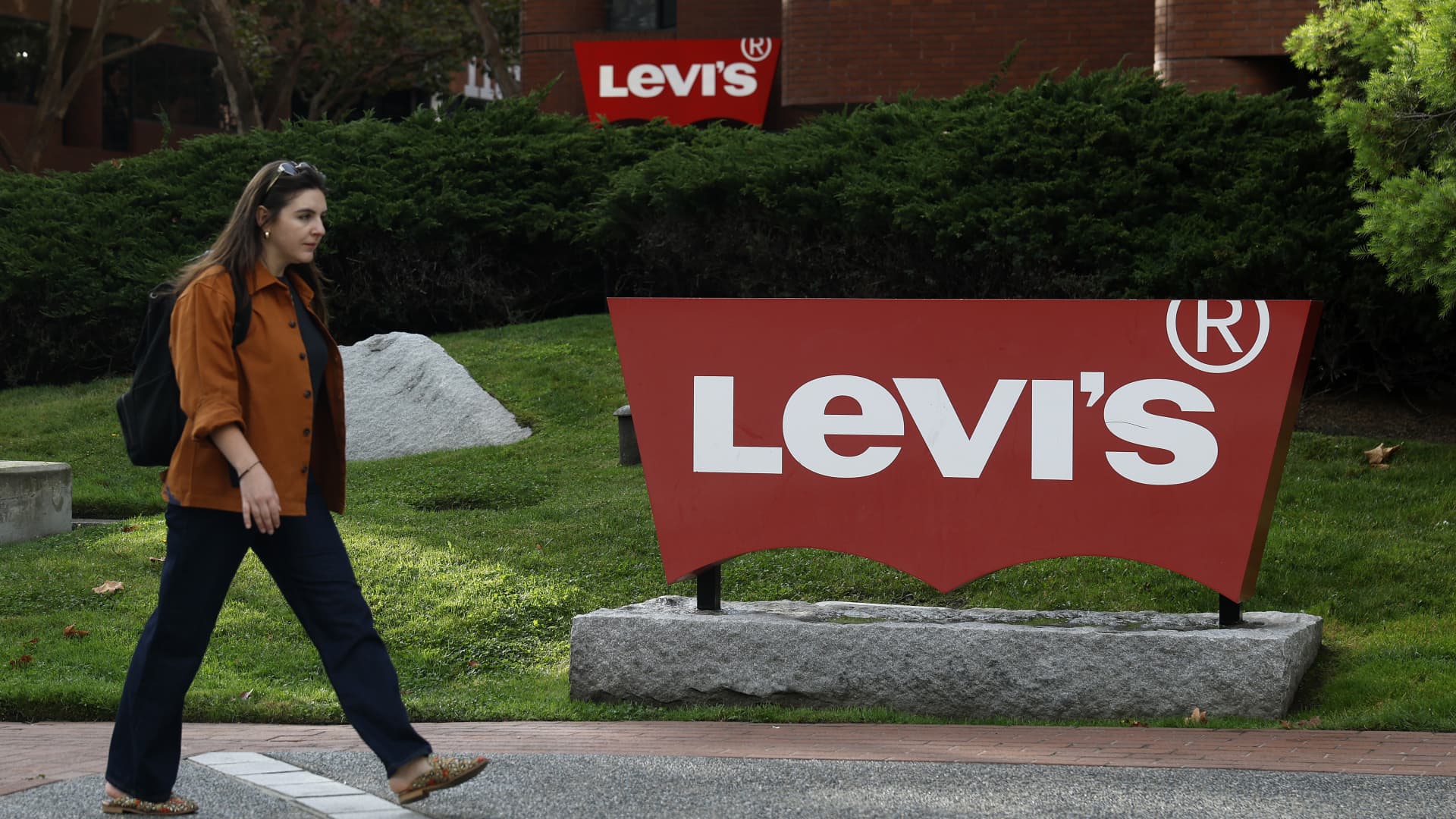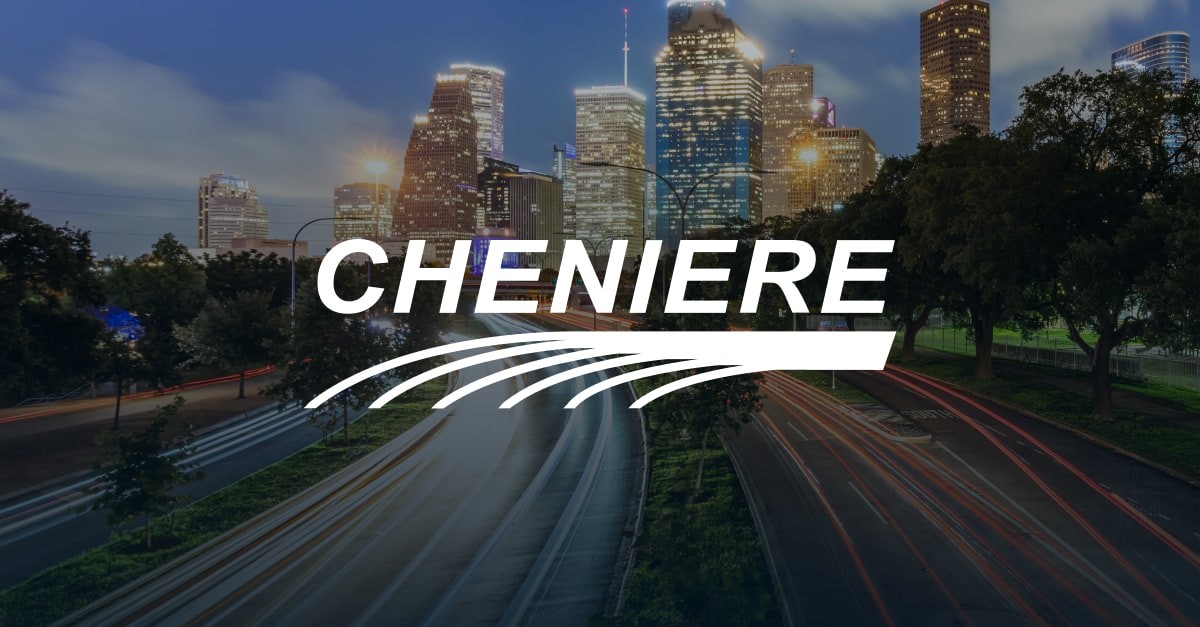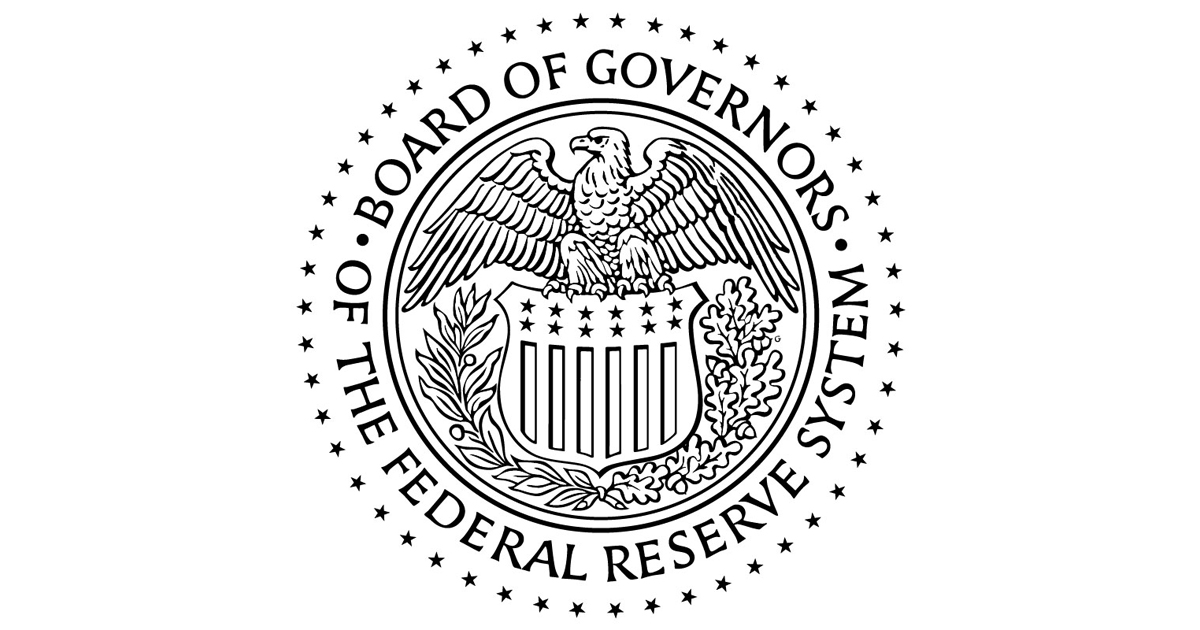- Biogen and Stoke Therapeutics Present New Data at the 54th Child Neurology Society (CNS) Annual Meeting that Support the Potential of Zorevunersen as a Disease-Modifying Medicine for Dravet Syndrome Biogen
- Beyond Seizures: Zorevunersen’s Impact on Cognition and Function NeurologyLive
- Biogen & Stoke: Zorevunersen Shows 95% Clinical Improvement at 3 Years | BIIB Stock News Stock Titan
- Overviewing Early-Stage Efficacy, Safety Data of Zorevunersen NeurologyLive
- Zorevunersen and the Next Chapter of Dravet Syndrome Care NeurologyLive
Category: 3. Business
-
Biogen and Stoke Therapeutics Present New Data at the 54th Child Neurology Society (CNS) Annual Meeting that Support the Potential of Zorevunersen as a Disease-Modifying Medicine for Dravet Syndrome – Biogen
-
Johnson & Johnson to Participate in the UBS Global Healthcare Conference
New Brunswick, N.J., October 9th, 2025 – Johnson & Johnson (NYSE: JNJ) will present at the UBS Global Healthcare Conference on Tuesday, November 11th, 2025. Management will participate in a Fireside Chat at 11:00 a.m. Eastern Time.
A live audio webcast of the presentation will be accessible through Johnson & Johnson’s Investor Relations website at
www.investor.jnj.com. An archived edition of the session will be available later that day.The audio webcast replay will be available approximately 48 hours after the webcast.
Continue Reading
-

Levi Strauss (LEVI) Q3 2025 earnings
Levi Strauss‘s profits are growing more than Wall Street expected despite higher costs from tariffs, thanks to targeted price increases and a shift away from wholesalers, the company said Thursday as it reported fiscal third quarter results.
During the quarter, Levi’s gross margin grew 1.1 percentage points to 61.7%, up from 60.6% in the year-ago period and better than the 60.7% analysts had expected, according to StreetAccount.
In an interview with CNBC, CEO Michelle Gass said the company has started to raise the price of some of its jeans and clothes and will hike more prices in the U.S. and other markets next year.
“As we’ve been taking these targeted actions, we’ve not seen an impact to demand. We’ll of course, stay very, very close to that but … we’re taking a surgical, thoughtful approach on any pricing,” said Gass. “We know that we’re a brand that is known for great quality and value. We don’t take that for granted. We know we have to earn that every day.”
Finance chief Harmit Singh added demand is “really strong” and most of the company’s revenue growth is not coming from price increases.
Price hikes are helping Levi’s margins, but the company is also discounting less and selling more through its own website and stores instead of wholesalers, which comes at a higher margin.
The denim maker said its strong results led it to raise its full-year outlook, but added it’s still taking a “prudent” and “conservative” look at the rest of the year as it navigates ongoing macroeconomic volatility, Singh said.
Here’s how Levi’s performed during the quarter compared with what Wall Street was anticipating, based on a survey of analysts by LSEG:
- Earnings per share: 34 cents adjusted vs. 31 cents expected
- Revenue: $1.54 billion vs. $1.50 billion expected
Though Levi’s posted better-than-expected results, shares dropped more than 6% in extended trading. Its stock had climbed about 42% this year through Thursday’s close.
The company’s reported net income for the three-month period that ended Aug. 31 was $218 million, or 55 cents per share, compared with $20.7 million, or 5 cents per share, a year earlier. Excluding one-time items related to impairment and restructuring charges, among other expenses, Levi posted adjusted earnings of 34 cents per share.
Sales rose to $1.54 billion, up 7% from $1.44 billion a year earlier.
Levi’s is now expecting its full year sales to rise 3%, up from its prior guidance of between 1% and 2% growth, far exceeding expectations of a 2.9% decline, according to LSEG.
It’s expecting its full year adjusted earnings per share to be between $1.27 and $1.32, up from a prior range of between $1.25 and $1.30. At the high end, the outlook is in line with Wall Street estimates of $1.31 per share, according to LSEG.
The jeans company said it’s expecting its operating margin to be between 11.4% and 11.6%, which is also in line with expectations of 11.6%, according to StreetAccount. It’s now expecting its gross margin to rise by 1 percentage point, which is the outlook Levi’s delivered earlier this year before it factored tariffs into its forecast. At the time, its guidance didn’t reflect any tariff impact. The following quarter, it cut its gross margin guidance by 0.2 percentage points because of the new duties.
Now, Levi’s is returning to that original outlook, as long as U.S. tariffs on imports from China remain at 30% and rest-of-world duties stay at 20% for the remainder of the year.
Under the direction of Gass, Levi’s has been working to grow its direct sales, expand beyond jeans and win over more female shoppers – strategies that helped the business grow both its top and bottom lines.
During the quarter, direct-to-consumer revenue, or sales from Levi’s website and stores, grew 11%, driven by strength in the U.S. market, while women’s was up 9%. Levi’s is benefiting from strong momentum in the denim category, but the company is growing its assortment outside of just jeans, which gives it a hedge if fashion trends change.
Other types of clothes beyond denim bottoms, including tops, now make up nearly 40% of the business. The company’s efforts to sell more tops is also resonating with consumers, as that category was up 9% during the quarter.
Continue Reading
-

UiPath Recognized as a Leader in the Gartner® Magic Quadrant™ for AI-Augmented Software Testing Tools :: UiPath, Inc. (PATH)
UiPath Test Cloud helps enterprises validate speed, identify bottlenecks and eliminate repetitive workflows to drive greater productivity
NEW YORK–(BUSINESS WIRE)–
UiPath (NYSE: PATH), a global leader in agentic automation, today announced its recognition as a Leader in the Gartner® Magic Quadrant™ for AI-Augmented Software Testing Tools. A complimentary copy of this research report is available here.The addition of AI and agents to traditional software testing tools expands the reach, productivity, and capacity of testers, creating a quality assurance approach featuring AI-powered agents capable of acting as autonomous decision-makers to conduct tests, rather than relying on predetermined scripts. Agents can intelligently interact with an application, learn its behavior, and dynamically adapt testing strategies to identify and address issues, leading to faster, more resilient, and efficient testing and a reduced manual maintenance burden.
UiPath Test Cloud takes those capabilities further, making agentic testing available to quality assurance, engineering, and testing teams at every level throughout the organization, accelerating and scaling testing across every step of the software development cycle. UiPath Autopilot™ for Testers offers an out-of-the-box agent with a broad collection of built-in and customizable AI to accelerate the testing lifecycle, including agentic test design, agentic test automation, and agentic test management. And, for more advanced testing teams, UiPath Agent Builder in Studio is a toolkit for building custom AI agents for unique testing needs, giving teams flexibility to create exactly what they need, when they need it, according to their own specifications.
“We see agentic testing as a business accelerator and the next evolution in QA, where AI-powered agents work alongside humans to independently analyze, generate, execute, and refine tests across the entire lifecycle,” said Gerd Weishaar, General Manager and Senior Vice President of Product Management for Test Cloud. “We’re building on that vision with a large community of users and resources to help create, customize, and deploy AI agents using natural language prompts and integrated toolsets. Our UiPath Test Cloud lets testers accelerate and simplify their work, unlocking productivity at scale.”
According to Gartner, “The market for AI-augmented software testing tools reflects the rapid evolution of technologies for efficient generation, maintenance, tracking, versioning, selection and prioritization of test artifacts; running tests at scale in the cloud; and optimizing the overall test process. These tools are intended to be more than just a tool for authoring and running tests; they are essential for businesses aiming to achieve excellence in software quality, productivity and market responsiveness.”
To learn more about the UiPath Platform™ and Test Cloud offerings, visit here.
Gartner, Magic Quadrant for AI-Augmented Software Testing Tools, By Joachim Herschmann, Sushant Singhal, Ross Power, C.A. Swan, 6 October 2025
GARTNER is a registered trademark and service mark of Gartner, Inc. and/or its affiliates in the U.S. and internationally and is used herein with permission. All rights reserved. Magic Quadrant is a registered trademark of Gartner, Inc. and/or its affiliates and is used herein with permission. All rights reserved.
Gartner does not endorse any vendor, product or service depicted in its research publications, and does not advise technology users to select only those vendors with the highest ratings or other designation. Gartner research publications consist of the opinions of Gartner’s research organization and should not be construed as statements of fact. Gartner disclaims all warranties, expressed or implied, with respect to this research, including any warranties of merchantability or fitness for a particular purpose.
About UiPath
UiPath (NYSE: PATH) is a global leader in agentic automation, empowering enterprises to harness the full potential of AI agents to autonomously execute and optimize complex business processes. The UiPath Platform™ uniquely combines controlled agency, developer flexibility, and seamless integration to help organizations scale agentic automation safely and confidently. Committed to security, governance, and interoperability, UiPath supports enterprises as they transition into a future where automation delivers on the full potential of AI to transform industries. For more information, visit www.uipath.com.
View source version on businesswire.com: https://www.businesswire.com/news/home/20251009228371/en/
Media:
Christian Potts
UiPath
pr@uipath.comInvestor Relations:
Allise Furlani
UiPath
investor.relations@uipath.comSource: UiPath
Released October 9, 2025
Continue Reading
-

Exclusive: EU set to act against Italy’s use of golden power on bank deals
BRUSSELS/ROME, Oct 9 (Reuters) – The European Commission is set to act against Italy’s so-called “golden power” legislation as part of a push against EU countries hampering bank consolidation in Europe, four sources with direct knowledge of the matter told Reuters on Thursday.
Brussels will launch two separate proceedings under single market and merger rules respectively, they said, asking not to be named due to the sensitivity of the matter.
Sign up here.
The move underscores the EU executive’s drive for consolidation in the financial services industry, crucial to creating a European capital union to finance the 27-country bloc’s green and digital goals and boost its competitiveness vis-a-vis the United States and China.
It will also be seen as a warning against Germany and Spain, both of which are involved in contested banking mergers.
Rome’s so-called golden powers are aimed at safeguarding the national interest in strategic sectors such as defence and telecommunications. Italy is one of a number of EU countries which have also applied that legislation to the banking sector.
Italy’s second-biggest bank UniCredit (CRDI.MI) withdrew its offer for smaller rival Banco BPM (BAMI.MI) on July 22, blaming government intervention for scuppering the 15-billion-euro ($17.35 billion) transaction.Before that, the European Commission had already warned Italy that it could be breaching EU rules by using the golden powers to rein in UniCredit’s takeover plans.Italy invoked national security considerations for the use of the golden powers in exchanges with Brussels, Reuters previously reported.Among several conditions, Italy had told UniCredit to halt activities in Russia by early 2026, to prevent savings collected by Banco BPM from benefiting Moscow’s economy as it continues its war against Ukraine. Rome opted to keep the decree in place despite the collapse of the deal.
Brussels believes that golden powers overlap with the powers of the European Commission and the European Central Bank (ECB), restrict competition and violate the principle of bank independence, one of the sources said.
The EU will order Italy to withdraw the decree that set terms for UniCredit’s failed bid, the sources said, while challenging the overall golden power legislation through a separate proceeding.
The EU Commission plans to send two separate letters to Italy by mid-November, the first source added.
Once the EU has ruled that the conditions imposed on UniCredit are unlawful, the bank will be able to assess whether to seek damages from Italy. The government can however challenge the decision before an EU court.
($1 = 0.8644 euros)
Reporting by Foo Yun Chee in Brussels and Giuseppe Fonte in Rome, additional reporting by Valentina Za in Milan, editing by Gavin Jones and Keith Weir
Our Standards: The Thomson Reuters Trust Principles.
Continue Reading
-

Speech by Vice Chair for Supervision Bowman on looking toward the future
As we wrap up today’s conference, I would like to thank all of the moderators and presenters on today’s panels. And of course, Secretary Bessent for sharing his perspectives on community banks, and the many community bankers, and state bank regulators and others who attended today’s event in person or virtually. I would also like to recognize our staff whose hard work made today’s conference possible.
Community banks drive local and regional economic growth, and they play a central role in the financial health of the customers and communities they serve.1 These banks often pursue unique business models—ones that are not easily replicated by larger banks, including the relationship banking model that is a central tenet of community banking. In today’s environment, many community banks are embracing innovation and continuing to evolve to better serve their customers in the current and future financial system. The focus of today’s conference has been on community banks, how they continue to innovate, and how they rise to the challenge to support their customers as the financial landscape continues to change.
Legislators and regulators are also rising to the challenge to ensure that the community banking system continues to thrive, through the critical task of ensuring that supervision and regulation are appropriately tailored. Our support for community banks cannot just be lip service; it must translate into specific actions that right-size regulation and apply appropriate supervisory standards, specifically in identifying the appropriate definition of a community bank, in establishing appropriately tailored regulatory thresholds, and in approaching supervision focused on material financial risk.
So, what is a community bank for this purpose? Generally, the regulatory framework uses the blunt tool of fixed asset thresholds. We know that relying solely on fixed asset thresholds is imperfect, at best. They fail to account for economic growth and inflation over time, resulting in firms with stable growth, consistent business models, and no change in risk profile crossing asset thresholds. These firms become subject to increasingly complex and burdensome regulatory requirements and supervisory expectations. This is clearly not the intended or desired outcome, in that crossing these fixed thresholds has the unintended consequence of “pushing down” standards designed for larger and more complex banks to smaller and less complex ones. Compounding this problem is the overlapping and inconsistent thresholds used to define banks of different sizes and engaged in different activities. We should ask whether this additional complexity is necessary or even helpful, and to what extent it impairs economic growth.
A simple fix would be for policymakers to adjust the community bank and other thresholds based on growth—and apply that adjusted threshold consistently—indexed to adjust for future growth. This approach would preserve the policy choice established when the threshold was initially set.
Defining a community bank is an important first step, but it is just that, a first step. The next question is how to appropriately tailor regulations for these and other firms. Over the years, I have supported an approach to regulation grounded in asking some simple—but critical—threshold questions. What problem does each new and existing regulation solve? What are the costs of this approach? And importantly, what alternative approaches are available? When we look back at existing regulations, we can clearly identify areas for improvement. For example, the community bank leverage ratio, or “CBLR,” was designed as an optional alternative framework to risk-based capital requirements for community banks. A community bank that opts into the CBLR framework and complies with the established ratio is deemed to comply with risk-based capital requirements.
But if we look back at the history of the CBLR, the agencies approached the task of calibration primarily by evaluating how many banks would be eligible to opt in and calibrating the requirement to maintain the same high level of capital in this population of banks. In my view, this approach failed to achieve the relief Congress intended, and more fundamentally, failed to answer the critical questions we must consider in the rulemaking process.
Let me turn to another area that needs to be addressed, the applications process. This process can also negatively impact community banks. It requires banks to seek approval from the Federal Reserve and other state and federal regulators for regulatory permission to engage in a transaction or activity. But this process can be unpredictable in terms of timing and information necessary to be ripe for consideration and approval. The costs of delay can be significant, damaging the value of the target bank, creating uncertainty for bank employees and customers, and resulting in costly delays for critical systems, integration contracts, and service agreements, potentially damaging the reputation of both firms.
The remedy is simple—regulatory application review should be effective, timely, and efficient. Banks should have a clear understanding of the information they must provide to complete the application well in advance. The standards for approval must be clearly defined and available to the public. And regulators should be prepared to act on a complete application within the statutory time frames. We have an opportunity to take a new approach, and we are doing so. We cannot accept the opacity of the status quo, especially when the “fix” is as simple as clear standards, clear forms, and prompt attention to and action on applications.
One area where we have improved transparency relates to mutual bank capital, which I have spoken about a number of times. Yesterday, the Board issued a series of frequently asked questions and two templates for mutual banks to use as they consider engaging in raising capital. These provide options for mutual banks to issue capital instruments that could qualify as tier 1 common equity or as additional tier 1 equity. These approaches are just a start—we are open to further refinement and improvement once mutuals have an opportunity to review and work to implement this new approach.
I will conclude with a discussion about how we ensure that the supervisory process is appropriate for community banks. Regulators are once again working to incorporate “tailoring” to more effectively allocate supervisory and bank staffing resources. This allows the calibration of supervisory activities that are appropriate to a bank’s size, risk, complexity, and business model. This approach is not new, but it has simply been ignored in recent years. Regulators have significant leeway in designing supervisory approaches, which may include issuing guidance that is technically non-binding but often plays a role similar to a regulatory requirement.
How do we address this problem?
First, through greater transparency. Supervisory practices often escape public and internal scrutiny. They are developed with little public input, and they are not subject to public notice and comment requirements under the Administrative Procedure Act. Supervisory practices are not scrutinized after an exam because of the activity’s designation as “confidential supervisory information” (CSI). “CSI” includes a broad array of bank and supervisory materials and actions taken in an exam context. The Fed continues to revise and redirect our supervisory practices, including the shift in focus toward material financial risk. These efforts would be most effective if accompanied by revisions to the definition and scope of CSI, which would promote greater public transparency and accountability.
Second, calibration of supervisory standards. Supervisory findings inform bank ratings, which can have follow-on effects like limiting options for mergers and acquisitions activity; raising the cost of liquidity; or diverting resources away from other, more important bank management priorities. We need to ensure that supervisory practices are appropriately calibrated so that a bank’s supervisory ratings reflect its financial condition and material financial risks.
Closing Thoughts
Before we close out today’s conference, I would like to again thank all of our attendees, both those here with us and those online. We appreciate the continued support for community banks across the United States. I would especially like to thank the community bankers who work tirelessly to support their customers, businesses, and local economies. Thank you for joining us today.In my role as the Vice Chair for Supervision, my responsibilities extend across banks of all sizes, from the largest GSIB to a single-branch community bank operating in an underserved rural market. The Fed’s regulatory and supervisory approaches to this wide range of firms must be tailored to address the unique characteristics of each type and size of institution. A one-size-fits-all approach that pushes down requirements from the larger banks to the smallest ones results in overregulation and excessive supervision that is not appropriate for the size, risk, complexity, and business model of community banks. Today, we have the opportunity to right-size the frameworks for each size of institution, and I look forward to working together with my colleagues at the FDIC and OCC to accomplish this goal, through sensible reforms and more appropriate supervisory approaches.
1. The views expressed here are my own and are not necessarily those of my colleagues on the Federal Reserve Board or the Federal Open Market Committee. Return to text
Continue Reading
-

AI Becomes a Modular Business Platform
OpenAI’s 2025 Developer Day reinforced that AI has entered its platform phase. What began as tools for developers are now modular systems for enterprise orchestration—apps, agents, and models designed to embed intelligence directly into how companies operate. Below are the key themes we believe will shape enterprise AI over the next year.
1. Apps are becoming the new platform layer
OpenAI’s Apps SDK enables developers to build applications inside ChatGPT—marking the start of an “App Store moment” for AI. OpenAI’s vision is for apps to become native, immersive experiences—not websites or plug-ins—reshaping how consumers discover brands, engage with content, and transact.
For enterprises, it means faster go-to-market for AI-native offerings and a need to define ecosystem strategies for distribution, monetization, and data governance to ensure competitive advantage and winning business models.
2. Agentic systems are moving from pilots to production
The launch of AgentKit (with Agent Builder, ChatKit, Connector Registry, and enhanced Evals) provides the toolkit to build, deploy, and manage AI agents safely.
At Bain & Company, we have been early adopters of this approach. OpenAI chose to highlight one of our examples in its announcement: “At Bain & Company, we developed a multi-layer agentic development and evaluation strategy. By leveraging OpenAI’s Evals, we are already seeing a 25% efficiency gain in our methodology through more efficient dataset curation, improved prompt optimization, and automated trace validation.”
Bain’s code modernization agent—featured in Sam Altman’s keynote—is one example of this innovation in action, accelerating our clients’ large-scale software transformation with structured evaluation, auditability, and human oversight built in.
This shift turns AI from copilots into structured, auditable systems of work—where orchestration, evaluation, and human oversight define success.
3. Code generation moves from copilot to collaborator
With Codex in General Availability, now integrated with Slack and supported by an SDK, AI can be embedded directly into developer workflows—reviewing code, writing modules, or maintaining pipelines as a digital teammate, managed by enterprise controls.
This marks the transition from individual productivity tools to collaborative digital labor, consistent with Bain’s perspective in “What’s Missing from Your AI Strategy: Strategic Clarity”—where AI takes on defined roles within teams and processes.
4. Video and multimodal generation are now creative infrastructure
Sora 2 and new mini image/audio models make video creation, image generation, and audio responses fast, affordable, and realistic—turning multimedia generation into a standard enterprise capability.
Creative and marketing teams can now scale content with precision and personalization, shifting focus from creating assets to governing pipelines and ensuring brand integrity.
5. APIs signal a deeper focus on developers—the next wave of enterprise enablement
OpenAI’s latest API updates—GPT-5 Pro for high-precision tasks, Sora 2 and Sora 2 Pro for realistic video generation, and new Mini Realtime and Image Gen models for lower-cost performance—reinforce its focus on developers as the growth engine of the AI ecosystem. The strategy is clear: Empower builders to compose, extend, and operationalize AI within their own environments.
For enterprises, this means faster innovation cycles and greater flexibility to embed intelligence directly into products, processes, and customer experiences.
The enterprise AI platform era
The sum of these announcements points to a clear direction: AI is becoming a living business platform. Organizations are shifting from using AI to running on AI—where apps, agents, and models continuously collaborate across operations.
Those who re-architect workflows around modular AI services—and build strong governance and measurement into them—will define the next generation of competitive advantage.
Continue Reading
-

Rishi Sunak hired by Microsoft and Anthropic as paid adviser
Rishi Sunak has taken up paid adviser roles at tech giant Microsoft and artificial intelligence start-up Anthropic.
The former prime minister has been told he must not lobby ministers on behalf of the companies by the Advisory Committee on Business Appointments (Acoba), an independent watchdog which oversees the activities of former government figures.
Sunak – who remains the MP for Richmond and Northallerton – said he was “delighted” to be working “with two of the world’s leading tech firms” and planned to donate his earnings to a charity he founded.
During his premiership, Sunak made tech regulation a significant priority, setting up an AI safety summit in 2023.
In letters of advice sent to Sunak by Acoba and published on Thursday, his part-time role at Microsoft was described as providing “high- level strategic perspectives” on geopolitical trends.
The watchdog said it had been informed by Sunak that his part-time advisory role at Anthropic – an AI firm seeking to compete with companies like OpenAI, Google and Meta – would be “akin to operating as an internal think tank”.
Acoba said Anthropic “has a significant interest in UK government policy”, meaning that Sunak’s appointment could potentially be seen to offer “unfair access and influence” within government.
The appointment with Microsoft, a “major investor” in the UK, also presented similar issues, it wrote.
However, it also said that his time spent out of government would have reduced the value of any information Sunak may still possess, while reiterating the standing rules ex-ministers have to abide when seeking employment after leaving government.
Sunak was told not to advise on bidding for UK contracts, or to lobby the government for two years from his last day in ministerial office.
In addition to the two tech roles, it was previously confirmed Sunak will act as a paid advisor to the bank Goldman Sachs, where he previously worked between 2001 and 2004.
There had been speculation that Sunak, who was in No 10 between October 2022 and July 2024, would leave the Commons to take up a Silicon Valley role shortly after the election.
He previously lived in California, where he still has a home, and held a US visa until 2021.
But in his final prime minister’s questions, Sunak vowed to spend more time in his constituency, which he called “the greatest place on Earth”.
“If anyone needs me, I will be in Yorkshire,” he said.
All proceeds from the new roles will be donated to The Richmond Project, a charity Sunak founded with his wife to tackle numeracy problems in the UK, another area he was vocal about while in Downing Street.
Posting on social media, Sunak said he would use his roles to “ensure” that coming technological change “delivers the improvements in all of our lives”.
Sunak said: “I have long believed that technology will transform our world and play a key part in determining our future.
“We stand on the edge of a technological revolution whose impacts will be as profound as those of the industrial revolution: and felt more quickly.”
Continue Reading
-
Setting a Global Standard | Comprehensive Artificial Intelligence Regulation – Brown & Brown
- Setting a Global Standard | Comprehensive Artificial Intelligence Regulation Brown & Brown
- Securing AI at Scale: Why Cloud-Native Trust, Not Just Code, is the Strongest Defense The AI Journal
- WIPL 2025 Takeaways: Staying Ahead in a Rocky Tech Regulatory Landscape Law.com
- CX leaders need to drive AI governance before it’s too late CX Dive
- Without guardrails, AI in finance is just expensive guesswork The CFO
Continue Reading
-
DuPont™ IntegraTec™ XTP 100 IG Ultrafiltration Modules Now Available Globally
WILMINGTON, Del., Oct. 9 – DuPont today announced that DuPont™ IntegraTec™ XTP 100 IG ultrafiltration modules are now available globally. A groundbreaking solution powered by innovative PVDF hollow fiber technology, designed specifically for industrial applications, these modules present a significant advancement in process and wastewater management.
DuPont™ IntegraTec™ XTP 100 IG modules offer substantial capital and operational expenditure savings compared to prior generations, making them a cost-effective solution for both new installations and replacements. Their spatial efficiency within an equivalent form factor approach stands as a testament to their advanced design, allowing for easier integration into existing systems while also reducing the footprint typically associated with traditional ultrafiltration plants.
“With the IntegraTec™ XTP 100 IG modules, DuPont is redefining what’s possible in industrial utility and wastewater treatment and reuse.” said Karla Butler, Global Vice President and General Manager, DuPont Water Solutions. “This innovation delivers up to 30% more flow per module and enables a simplified plant design—empowering engineering firms and end users to achieve greater efficiency with lower capital and operating costs.”
These modules are built for adaptability, enabling them to perform effectively under a variety of operational conditions, including low backwash flux and alternative cleaning methods. Their robust construction ensures long-term durability, maintaining stable operation even in challenging water environments characterized by high turbidity or COD levels.
DuPont™ IntegraTec™ XTP 100 IG ultrafiltration modules not only simplify the design and maintenance requirements compared to previous generations and competitive offerings but also set a new standard in reliability and performance for industrial water treatment applications.
About DuPont Water Solutions
DuPont Water Solutions’ technologies are helping to purify more than 50 million gallons of water every minute in 112 countries across the world. DuPont offers market-leading technologies to address a variety of challenges faced by water treatment municipalities, seawater desalination plants, and industrial water users, including the microelectronics industry, through a broad portfolio of membranes, resins and complete systems. The team is innovating solutions that can help balance the world’s growing water and energy demands, with products that help maximize the availability of electricity, lithium and green hydrogen. The business also supports the life sciences industry with solutions for drug development, crop-to-table processing, protein-rich diets, and innovative healthcare.About DuPont
DuPont (NYSE: DD) is a global innovation leader with technology-based materials and solutions that help transform industries and everyday life. Our employees apply diverse science and expertise to help customers advance their best ideas and deliver essential innovations in key markets including electronics, transportation, construction, water, healthcare and worker safety. More information about the company, its businesses and solutions can be found at www.dupont.com. Investors can access information included on the Investor Relations section of the website at investors.dupont.com.DuPont™, the DuPont Oval Logo, and all trademarks and service marks denoted with ™, ℠ or ® are owned by affiliates of DuPont de Nemours, Inc. unless otherwise noted.
Continue Reading